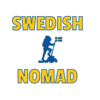Disgusting Food Museum media mentions
The Disgusting Food Museum has been mentioned in the media many times since we opened. Below is a selection of our media mentions. Click the logo to get to the original article/video.
Articles
The Gatekeepers Who Get to Decide What Food Is “Disgusting”
On Tripadvisor, the Disgusting Food Museum is ranked No. 1 on a list of ninety-four things to do in Malmö, the third-largest city in Sweden. Visitors are often surprised to find that the museum is situated on the first floor of a shopping mall, between a furniture store and an art gallery. Daniela Nusfelean, a Romanian college student who visited the museum in January, said that one of the first things she noticed was the absence of any odor. “This place is supposed to have so much food,” Nusfelean remembered thinking. “How can food not smell?”
The idea that anything labeled “food” can be described as “disgusting” is a minefield, running up against cultural tastes and personal preferences, not to mention the shrinking ability of some countries to feed all their people.
But clearly, if every human had a cornucopia of the world’s edibles laid out on a table stretching from one end of the earth to the next, not everyone would dig enthusiastically into, say, a lamprey pie, a sliver of maggot-infested pecorino or a chunk of rotten shark meat.
It’s easy to read the museum as a culturally insensitive house of culinary horrors — people(who are not me) in places (that are not here) eat that? And sure, there’s not not a gross-out factor, as evidenced by the name. But West told me the actual mission is the opposite: By really diving into the world of disgust, he’s hoping he can change the way people eat, and maybe save the world.
Welcome to the world’s first exhibition devoted to foods that some would call revolting. The museum’s name and its contents are pretty controversial — one culture’s disgusting is another culture’s delicacy. That goes for escamoles, the tree-ant larvae eaten in Mexico, or shirako, the cod sperm eaten in Japan, or bird’s nest soup, a Chinese dish of nests made from bird saliva. The name is meant to grab visitors’ attention, but that’s the point that West says he’s trying to make: Disgust is a cultural construct.
Disgust is considered one of the basic human emotions, much like Pixar’s movie Inside Out showed us. It protects us from disease by making us avoid unsafe food— and yet while the emotion itself is universal, the food that we classify as “disgusting” is not. And that’s exactly why Swedish Samuel West and Andreas Ahrens created a museum dedicated to disgusting food from everywhere across the world.
It is a hands-on, tongues-out experience. At the Museum of Disgusting Food in Malmö, in Sweden, all the world’s great cuisines are represented. Each exhibit is considered a delicacy somewhere, but strikes many unaccustomed palates as revolting. Visitors are invited to handle a raw bull’s penis and sip liquor with dead mice in it.
Have you come across a breathtakingly horrible food and thought ‘that belongs in a museum’? If you haven’t, that’s probably because you’ve never come across a durian. Or any of the other items belonging in the Digusting Food Museum. That’s right, there is an institution archiving all the weird and horrible foods being consumed around the world.
There was a time when museums were reserved for fine art and high-brow nonsense we only pretend to understand. These days, the world is full of wonderfully weird museums accessible to the everyman with everything from broken relationships and all things phallic to ramen and barbed wire. Now, Sweden is set to open one more: the world’s grossest food museum.
It’s a fun and unusual experience for both kids and adults with the possibility of challenging your own boundaries of what you consider edible.
At Disgusting Food Museum, you get to question [what we deem edible] and it might be an eye-opener, especially after the tasting session. Many people are afraid of eating unknown things like insects, but it really comes down to what’s considered edible in your culture.
The Disgusting Food Museum is bringing its exhibition of unique international culinary samplings to LA’s A+D Architecture and Design Museum from 9 December until 17 February, 2019. The museum features “the most provocative foods from around the world” in an effort to celebrate and examine how different cultures approach foods that might be considered disgusting somewhere else.
The Disgusting Food Museum, which made headlines when it opened in Malmo, Sweden, in November 2018, is traveling somewhere warm for the winter — specfically, to Los Angeles.
Alongside the Sweden branch, the museum will open a three-month pop-up in downtown L.A.’s Architecture and Design Museum. It will be open Wednesday through Sunday every day from December 9 until February 17.
For a quirkier museum experience, the Disgusting Food Museum celebrates how food can bridge cultures and connect people. Challenging perceptions of what is edible, the museum showcases 80 of the world’s most unusual food items, shining a light on the allure and fascination of the weird, different, macabre, and disgusting.
Bag in hand then, visitors venture off on a world tour of specialities, some of which may seem to a Western palate like ingredients in a witch’s brew but are considered delicacies.
“The Disgusting Food Museum exists to let people explore the world of food and to see both their own food and (other food) from the lens of another culture,” says Ahrens.
































